climatologyMeteorologyAtmosphere
Type of resources
Available actions
Topics
INSPIRE themes
federalThemes
Keywords
Contact for the resource
Provided by
Years
Formats
Representation types
Update frequencies
status
Scale
Resolution
-
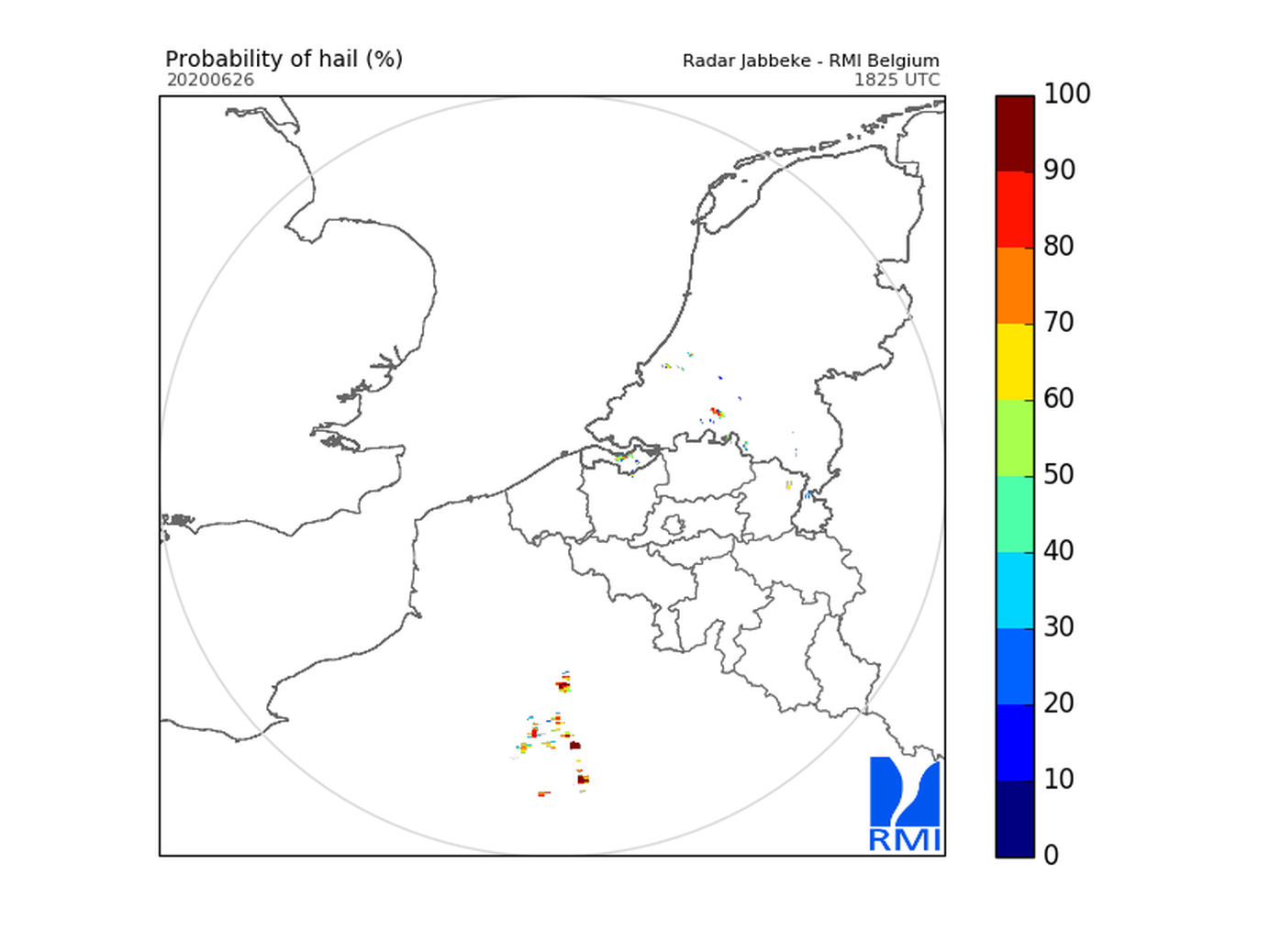
Hail products are derived from the observed vertical profiles of radar reflectivity and the NWP vertical profiles of temperature. Three types of products are generated. poh : probability of hail of any size (larger than 0.5 cm diameter)expressed in %. posh : probability of severe hail(larger than 2cm)expressed in %. mesh : maximum expected size of hailexpressed in mm of hailstone diameter. All products are generated every 5 minutes. This product is not publically available yet.
-
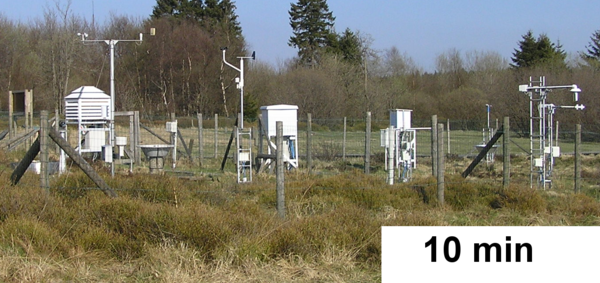
RMI operates a network of 17 automatic weather stations in Belgium. These weather stations report meteorological paramaters such as air pressure, temperature, relative humidity, precipitation (quantity,duration), wind (speed, gust, direction), sunshine duration, shortwave solar radiation and infrared radiation every 10 minutes.
-
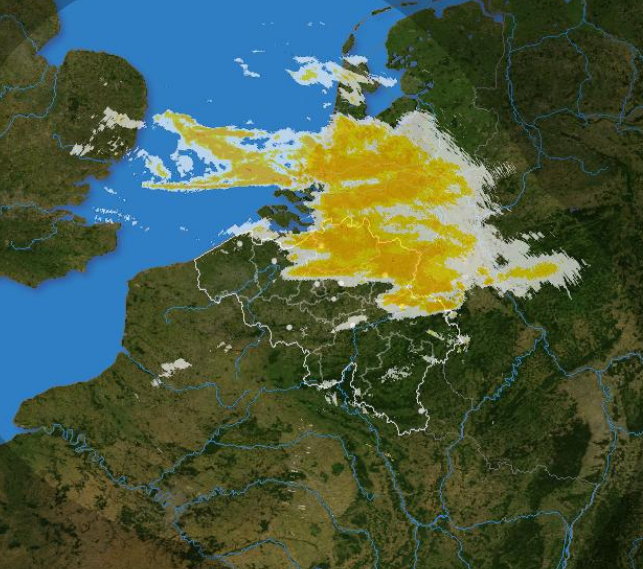
The composite is produced every 5 minutes using the reflectivit data from the Wideumont and Jabbeke weather radars. This product is not publically available yet.
-
The climatological network contains about 200 stations spread over the whole country. It consists of voluntary observers recruited by the RMI, professional observers of Skeyes (civil aviation) or the Air Force (military aviation) and civil servants of the state, communities or private companies. The observers measure the amount of rain fallen in the last 24 hours in the pluviometer of the RMI every morning at 8 o‘clock. In more than half of the stations the extreme air temperatures are also recorded by reading the maximum and minimum temperature in a standardized weather shelter. The observers send their observations either on a daily or on a monthly basis to RMI. This product is not publicly available yet.
-
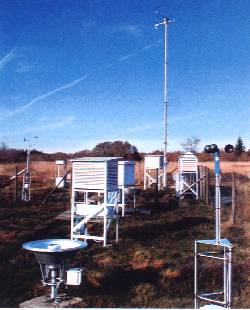
The SYNOP data of RMI contain the observations of the synoptic network, currently consisting of 29 stations, 13 of which are owned by RMI. The other stations belong to MeteoWing (8 stations), Skeyes (7 stations). There is also 1 foreign station. All SYNOP data is given in Universal Time! (local time winter = UT +1; local time summer = UT + 2) Parameters: 1. Precipitation: PRECIP_QUANTITY + PRECIP_RANGE 2. Temperature: TEMP + TEMP_MIN + TEMP_MAX + TEMP_GRASS_MIN 3. Wind: WIND_SPEED + WIND_SPEED_UNIT + WIND_DIRECTION + WIND_PEAK_SPEED 4. relative humidity: HUMIDITY_RELATIVE 5. weather type: WEATHER_CURRENT 6. air pressure: PRESSURE of PRESSURE_STATION_LEVEL 7. sunshine duration: SUN_DURATION_24H 8. Global radiation: SHORT_WAVE_FROM_SKY_24HOUR 9. Total cloudiness: CLOUDINESS
-
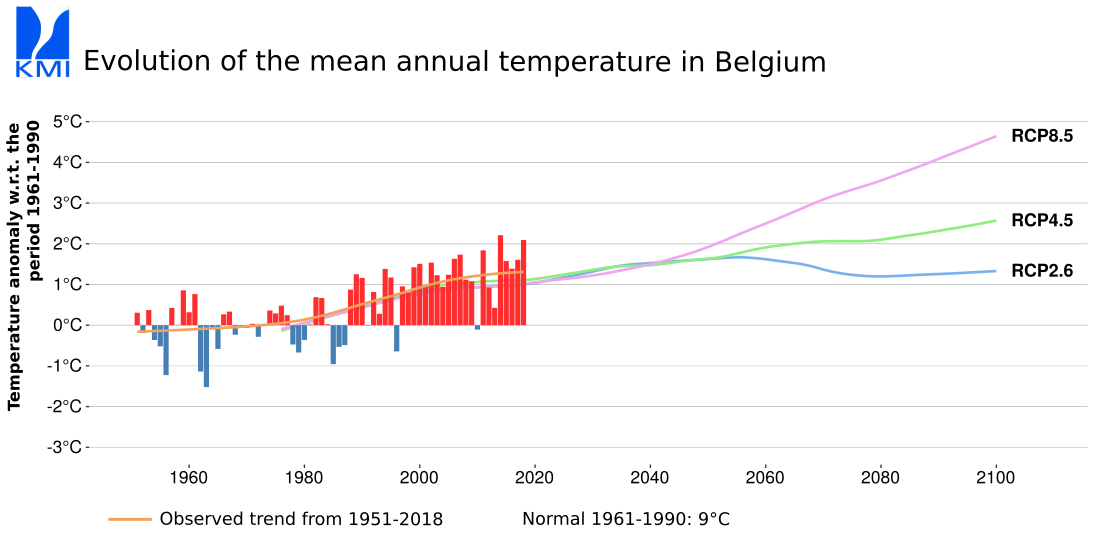
Regional Climate Model: ALARO-0 model This data includes spatially-detailed climate projections for Belgium and can be used for climate-change impact assessments (historical and RCP simulations) and analysis of past climate (evaluation simulation). Note that the historical run will, by construction, not correspond to past observations. For further details please contact RMI or cordex@meteo.be. This dataset has been obtained by dynamical downscaling using the regional climate model ALARO-0 (Termonia et al., 2018a) in the context of the BELSPO-funded project CORDEX.be (Termonia et al, 2018b, www.euro-cordex.be). The downscaling methodology is in line with the guidelines of the Coordinated Regional Downscaling Experiment (CORDEX; Jacob et al. 2014) and follows the climate scenario's RCP2.6, RCP4.5 and RCP8.5 as suggested by the Intergovernmental Panel on Climate Change. The spatial resolution of the data is 4-km and the domain covers a region centered over Belgium. The temporal resolution of the data is daily over long continuous periods. The historical experiment covers the period 1976-2005 and the RCP scenarios cover the period 2007-2100. Precipitation data has undergone thorough validation (Van de Vyver et al., 2021) and investigation (Helsen et al., 2020). The 4-km simulations were performed in a double (one-way) nesting setup where the Belgian domain was nested in an ALARO-0 run over the EURO-CORDEX domain (Berckmans et al, 2021) with a resolution of 0.44° (≃ 50 km) and validated in Giot et al. (2016). Around Europe the latter was forced by the global climate model CNRM-CM5 (historical, RCP 2.6, RCP 4.5, RCP 8.5) that has a resolution of about 1.4° (≃ 155 km) and is part of the Coupled Model Intercomparison Project CMIP5. Giot et al., 2016. DOI: 10.5194/gmd-9-1143-2016 Helsen et al., 2020. DOI: 10.1007/s00382-019-05056-w Termonia et al., 2018a. DOI: 10.1016/j.cliser.2018.05.001 Termonia et al., 2018b. DOI: 10.5194/gmd-11-257-2018 Jacob et al., 2014. DOI: 10.1007/s10113-013-0499-2 Van de Vyver et al., 2021. DOI: 10.1175/JAMC-D-21-0004.1 Further info can be found on https://cordex.org/experiment-guidelines/ http://www.belspo.be/belspo/brain-be/projects/FinalReports/CORDEXbe_FinRep_AD.pdf Periods: * present climate: HIST_1975_2005 * future climate, 3 emission scenarios RCP 2.6, RCP 4.5, RCP 8.5: RCP26_2007_2100, RCP45_2007_2100, RCP85_2007_2100 Variables: 1. et0 = Reference Evapotranspiration [kg m-2 s-1]; to get this in mm/day, the data should be multiplied by 60*60*24 = 86400. It is calculated following the FAO method (Allen et al., 1998) using the Penman-Monteith equation for reference (potential) crop evapotranspiration 2. hurs = relative humidity [%] 3. pr = precipitation [kg m-2 s-1]; to get precipitation in mm/day, the data should be multiplied by 60*60*24 = 86400 4. rsds = global solar radiation [W m-2] 5. sfcWind = wind at 10 m [m s-1] 6. tas = near-surface (2 m) air temperature at 2 m [K] 7. tasmax = daily maximum near-surface (2 m) air temperature [K] 8. tasmin = daily minimum near-surface (2 m) air temperature [K] 9. et0 = Reference Evapotranspiration [kg m-2 s-1]; to get this in mm/day, the data should be multiplied by 60*60*24 = 86400
-
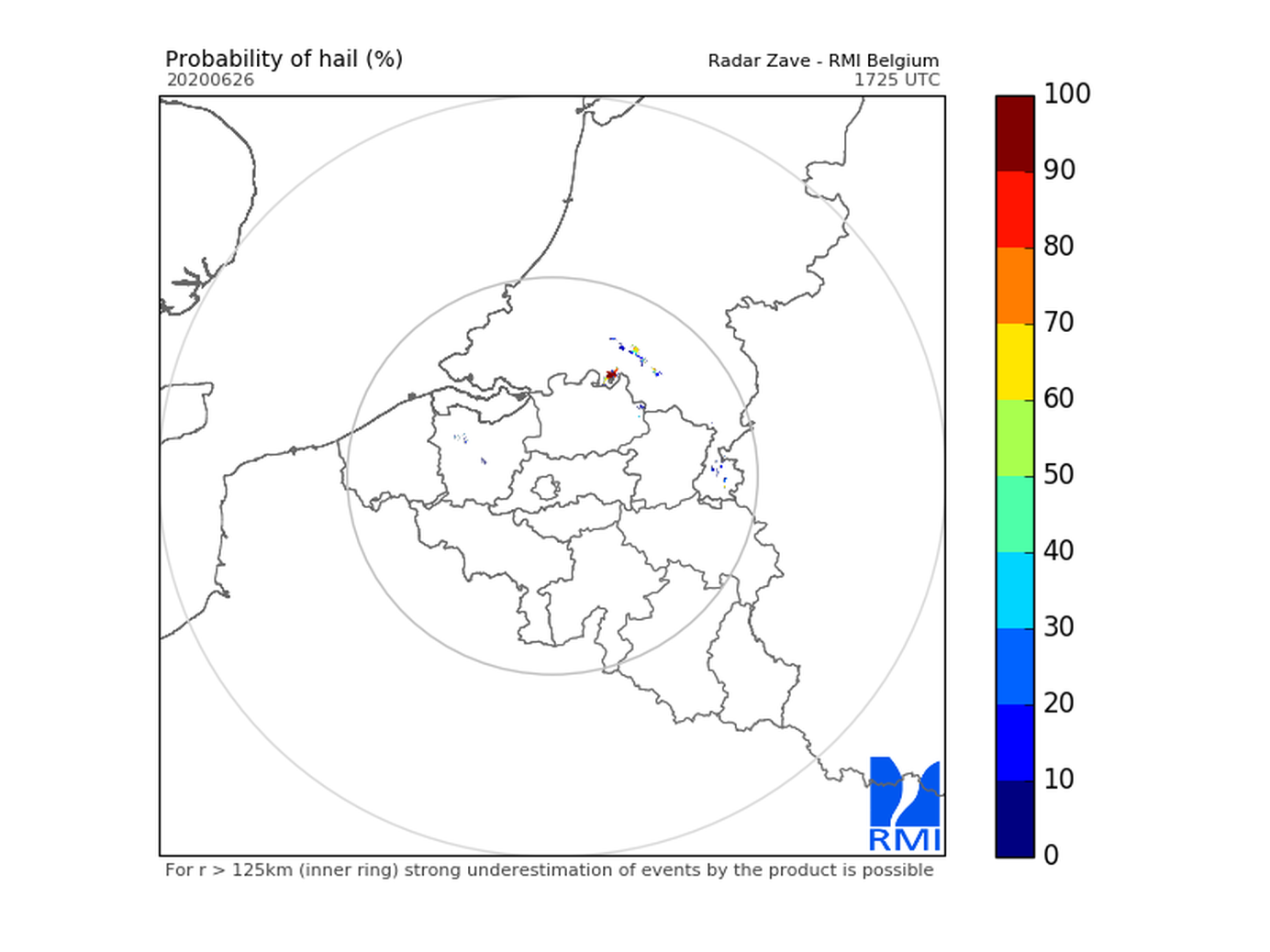
Hail products are derived from the observed vertical profiles of radar reflectivity and the NWP vertical profiles of temperature. Three types of products are generated. poh : probability of hail of any size (larger than 0.5 cm diameter)expressed in %. posh : probability of severe hail(larger than 2cm)expressed in %. mesh : maximum expected size of hailexpressed in mm of hailstone diameter. All products are generated every 5 minutes. This product is not publically available yet.
-
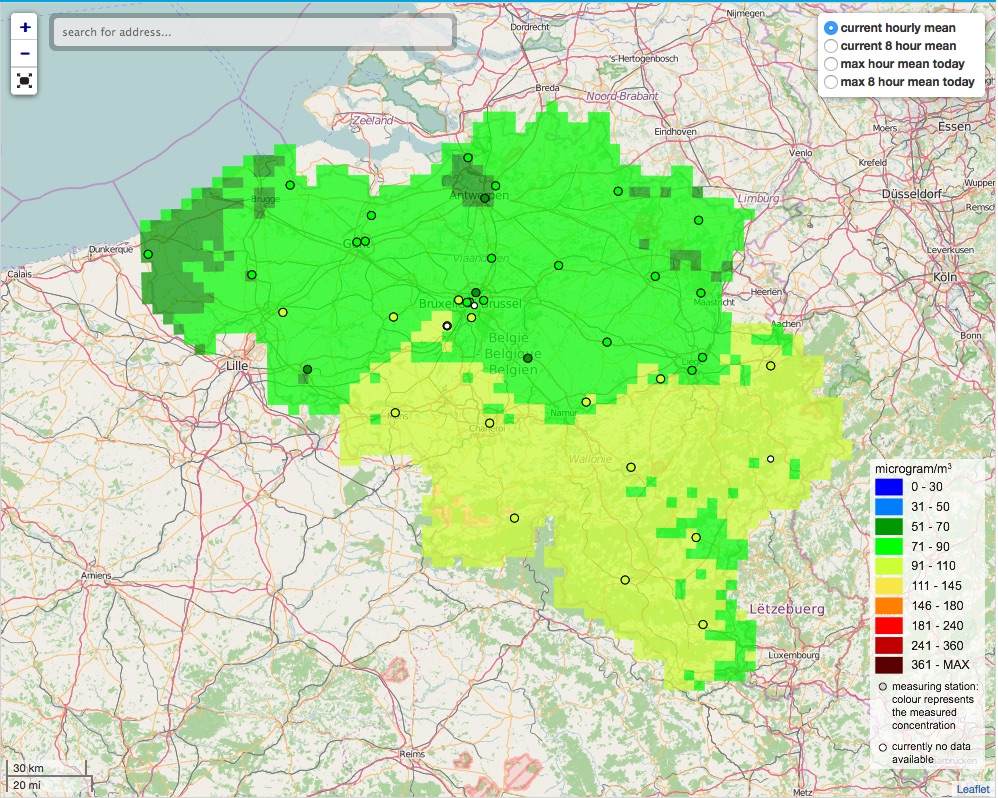
The air quality monitoring networks in Belgium are used for the assessment of air quality under the air quality directives (2008/50/EC & 2004/107/EC).
-
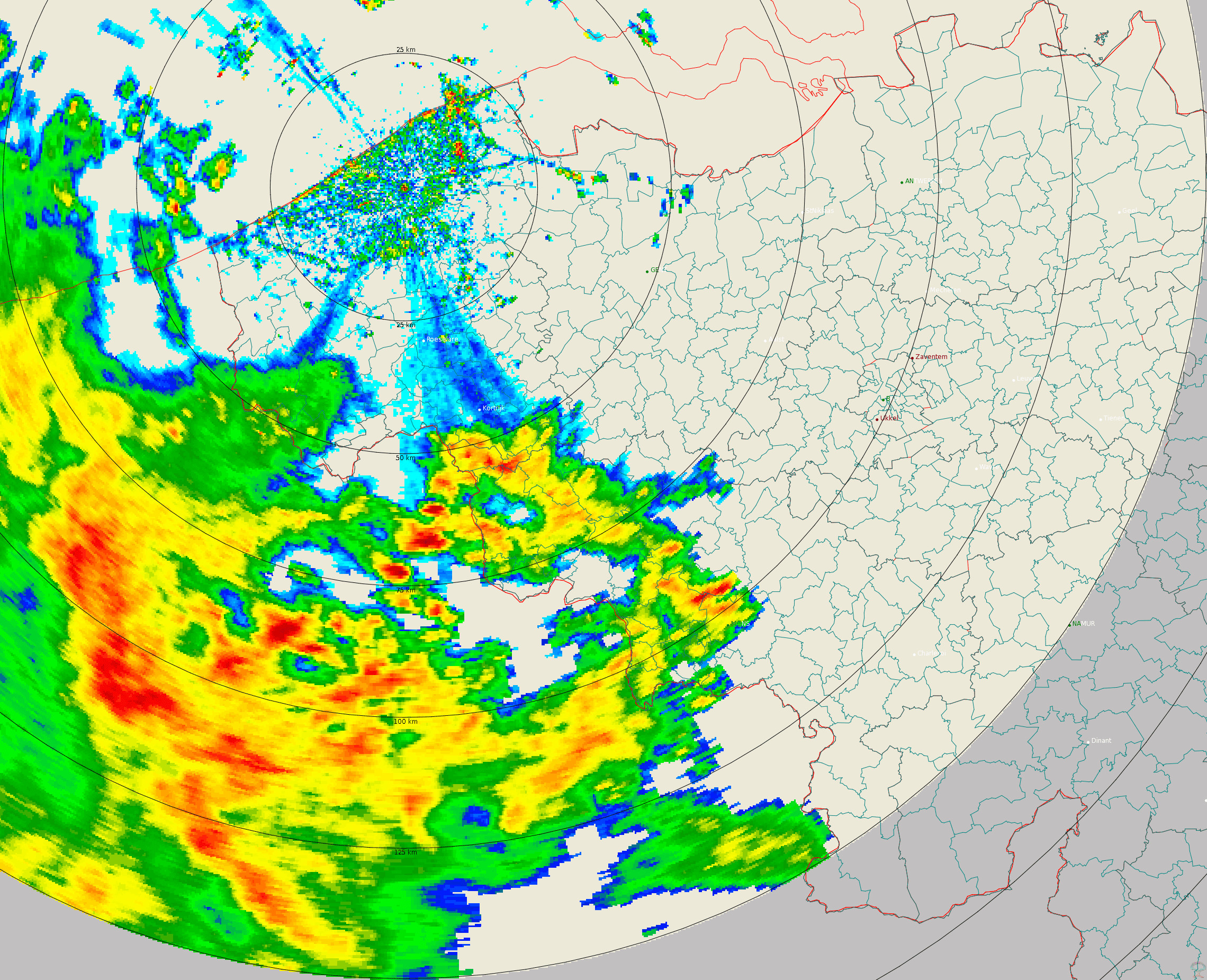
Polar volume reflectivity data from the Jabbeke weather radar. Volume data files are produced every 5 minutes from a multiple elevation scan. This product is not publicly available yet.
-
Hourly forecasts for each belgian commune, from current hour up to the next 5 days. This product is not publically available.
 geo.be Metadata Catalog
geo.be Metadata Catalog